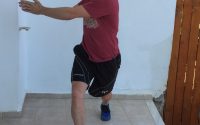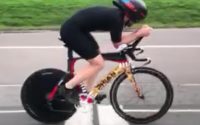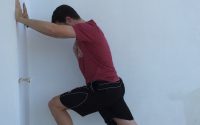Quick Case Study: Thoracic Spine
This is a quick case study of how to use type I and type II thoracic motion to help increase Thoracic Mobility
Before
15 Year old male, more of a movement dysfunction problem than pain. I watched him squat and recorded it on the kinesio Capture app (now called Spark Motion)…take a look…
You can see from this that there is a fair bit going on, I looked at it a couple of times, you can see that he is over using his hips…and in you remember in the Knee Pain Case Study that the patient was over flexing at the hips also, and it resolved significantly after working on her feet. However, if you look at the video there certainly seems to be no lack of dorsiflexion.
In this case it seemed to me that there was more of a thoracic spine issue, so we went through some thoracic spine exercises….and here’s the result!
After
It’s an impressive change in just a few minutes, you can see the motion as a whole is improved, but you can see that the thoracic spine is allowing the hips to work less and the arms to stay pretty much straight over head. That isn’t the whole picture, there is still things that could be progressed and worked on, but it’s a great start.
My Strategy
This one looked as though it would respond well, with this one I went with a quick sagittal lunge with type I, type II thoracic matrix.
- Left rotation with right lateral flexion (Type I Motion)
- Right rotation with left lateral flexion (Type I Motion)
- Left rotation with left lateral flexion (Type II Motion)
- Right rotation with right lateral flexion (Type II Motion)
We could easily have integrated multidirectional lunges (and if I did it again I would) into the type I/II matrix, but I was keen to crack on and I knew this would work. This is a great simple strategy.
Enjoy,
Physioblogger


